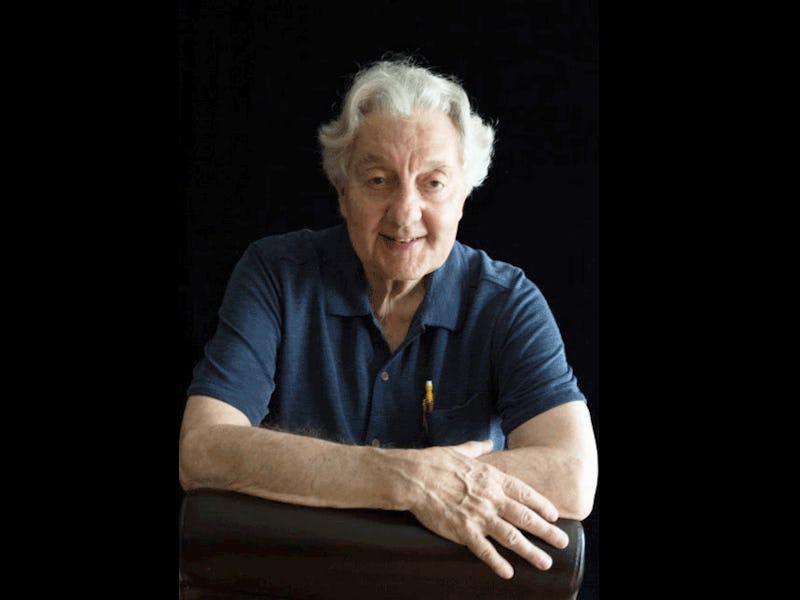Dr. Herbert Kleber: How a 1960s “narcotic farm” shaped modern addiction treatment
Dr. Herbert Kleber, honored with a Google Doodle, used experience in a Lexington prison hospital to reframe addiction treatment for millions.

Dr. Herbert Kleber, the subject of today’s Google Doodle, and one of the founding fathers of modern addiction treatment, never wanted to work with addicts. As a young psychiatrist, fresh off his residency at Yale, Kleber planned to join the National Institutes of Health. But three months before his start date, in 1964, plans changed. Kleber was assigned to a vastly different kind of health institution, the Public Health Service Hospital in Lexington, Kentucky, America’s first drug treatment prison.
“So I said, ‘There must be some mistake guys. We had an agreement,’” Kleber recalled in an oral history with Columbia University.
“Good luck!” they said.
So off he went to work with an entirely new patient population.
Down on the “narcotic farm”
Inmates and outsiders alike called the Lexington prison hospital a “narcotic farm.” Opened in 1935, the hospital was notorious for housing famous drug addicts like jazz trumpeter Chet Baker, beat writer William S. Burroughs, and thousands of regular folks dependent on drugs like opioids, psychedelics, alcohol and a myriad of other substances. The prison hospital treated about 1,000 patients housed in facilities spread over 1,000 acres, Kleber recalled in an interview. Some prisoners were sent to the narcotic farm; other people went voluntarily seeking treatment. There were even therapists, doctors, lawyers, and pharmacists who’d gotten in trouble with drugs and came to Lexington as a work-mandated punishment.
The Google Doodle honoring Dr. Herbert Kleber on October, 2019.
According to Nancy Campbell, Ph.D., a drug policy expert and co-author of The Narcotic Farm: The Rise and Fall of America’s First Prison for Drug Addicts, this was the first time you saw people be compassionate toward addicts.
“The ultimate goal was to understand the underlying mechanisms of addiction well enough that you could cure it, or at least prevent it,” Campbell told NPR.
The men and women in Lexington worked on the farm, in the kitchen, laundry room, or wood shop, so called “work therapy.” They also participated in detoxification, group and individual therapy, and research on various experimental addiction treatments through the Addiction Research Institute, up until the 1970s.
By the time Kleber got to Lexington, in the early 1960s, much of the scientific community hadn’t yet focused on addiction; there was limited research and understanding about the condition. Common knowledge ruled: addiction is a moral failing, the result of sins of the past and poor discipline.
"Kleber found that demonizing addicts doesn’t work.
In his two years working at the narcotic farm, Kleber came to determine that this punitive approach, that demonized addicts, didn’t work.
“I learned that the techniques then used in treatment were not very effective and that new approaches to treatment were desperately needed,” Kleber said, reflecting on his time in Lexington.
At the narcotic farm, treatment instead focused on addition as a disease. The narcotic farm tried a bunch of approaches to treatment: individual and group talk therapy, detoxification, even using small amounts of drugs to curb addiction.
The narcotic farm achieved major breakthroughs in understanding and treating addiction, like using methadone as treatment for heroin addiction and reframing addiction as a chronic, not acute condition.
In Lexington, researchers were gaining insights but failed at finding effective treatment. Patients had a 90 percent relapse rate within 90 days post-treatment at the narcotic farm.
Kleber was discouraged, and after returning to Yale, he wanted to run far from treating addicts.
“The last thing in the world I wanted to do was to treat addiction,” he said about the experience.
But parents, colleagues and addicts themselves, came to Kleber, desperate for guidance.
The reluctant addiction expert realized, “Well, maybe it’s fate.”
He spent the next five decades conducting research, treating patients, mentoring clinicians, and establishing groundbreaking institutions like the drug and dependence unit at Yale, the division on substance use disorder at Columbia, the National Policy Center on Addiction and Substance Abuse, and the National Center on Addiction and Substance Abuse (now the Center on Addiction).
He spent a lifetime discovering novel treatments and spurring research and funding for the difficult disease, work that undoubtedly saved countless lives.
Dr. Kleber eventually established a concept of “evidence-based treatment”, which relied on research and science to change the path of addiction. Rather than punishing or shaming patients, as many of his predecessors in the field had done, Dr. Kleber used scientific research to develop strategies to keep patients sober, mitigate withdrawal, and avoid relapse through careful use of medication and therapeutic communities.
Over his 50 year career, Kleber elevated substance abuse as a subject of scientific research and national policy. He played a role in offering drug abusers a way out. Anyone who has sought or benefited from addiction treatment may have Kleber to thank.
Kleber died October 5, 2018, at 84 years old. He was honored with a Google Doodle on Tuesday, on the 23rd anniversary of his election to the prestigious National Academy of Medicine (formerly the Institute of Medicine).